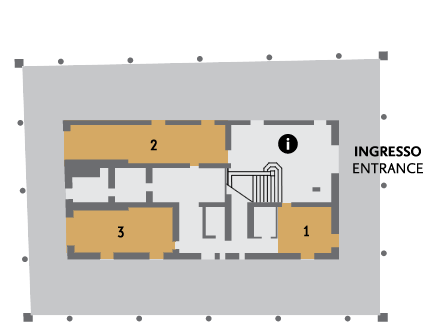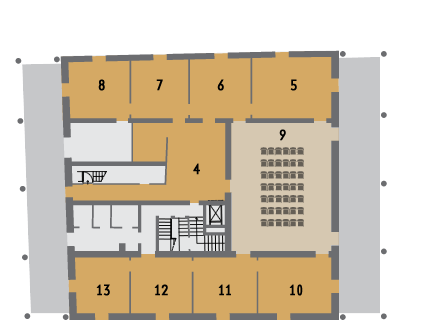
The Museum
The New Lands MuseumTHE NEW LANDS MUSEUM IS HOUSED IN THE PALAZZO KNOWN AS “DI ARNOLFO” AND ILLUSTRATES THE PHENOMENON OF THE FOUNDATION OF NEW SETTLEMENTS THAT WAS A FEATURE OF MUCH OF MEDIEVAL EUROPE.
With the renaissance of the year 1000, the growth of the population, the flourishing of towns, and the resumption of trade ushered in a period that was conducive to a certain degree of progress. Sovereigns, nobles, religious institutions and municipalities began to extend their control over the surrounding territories, giving rise to a profound restructuring of the geography of the settlements: thus what is known as the Terre Nuove, the New Lands, came into being, settlements or towns where the new inhabitants could enjoy freedom from feudal ties, tax exemptions and the offer of building plots on which to construct their houses. The Museum pays particular attention to the development that this phenomenon prompted in Tuscany and the Florentine territory where, from the end of the 13th century, numerous new towns sprang up: including San Giovanni Valdarno, or rather Castel San Giovanni.
THE MUSEUM EXHIBITION ITINERARY
Through a combination of videos, images, interactive animation, models and historical re-enactments, the exhibition allows us to understand the urban features that moulded the Tuscan “New Lands” and outlines the main features of the phenomenon of the newly founded settlements, which underwent a remarkable development in the Middle Ages all over Europe. Towns that were established by sovereigns, lords, bishops, cities and municipalities to strengthen their hegemony, they took on common characteristics both in terms of architecture and urban planning as well as demographic, anthropological and social aspects.
THE PALAZZO
The Palazzo di San Giovanni, like all palaces in the newly established towns, was built between the end of the 13th and the beginning of the 14th century, for precise political purposes and for the exercise of control. The building was the seat and residence of the representative of the Florentine Municipality and the meeting place of the Civic Council; not only was justice administered here, but also cereals were stockpiled should they be needed in the event of war or famine. Representatives of Florence, the Vicars, affixed their coats of arms to the facade, giving the building the eclectic appearance that it still has today. At the beginning of the 15th century, the renovation of the palace as the residence of the Florentine Vicar showed Florence’s desire to make San Giovanni the centre of power in the Valdarno area. Over the centuries, the layout of the building changed, adapting to the political changes that affected Florence and its territory. In 1909, the palace was declared a national monument, while the designation Palazzo “di Arnolfo” became widely used after the Second World War, following its restoration in 1934.



